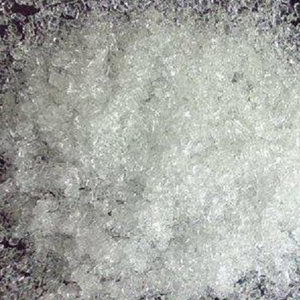
| Parameters | Specifications |
| Appearance | Fine Crystalline |
| pH of 10% Aqueous Solution | 6.5 to 8 |
| Assay | 98% minimum |
| Sulphites & Sulphates | 1% max |
| Heavy Metals | Less than 5 ppm |
| Iron | Less than 10 ppm |
| Parameters | Specifications |
| Appearance | White Uniform Crystals (10 mesh) |
| pH of 10% Aqueous Solution | 6.5 to 8 |
| Assay | 99% minimum |
| Sulphites & Sulphates | 0.2% max |
| Heavy Metals | Less than 5 ppm |
| Iron | Less than 10 ppm |
| Parameters | Specifications |
| Appearance | Cylindrical Pellets (5 mm to 10 mm for P4) & (2 mm to 5 mm for P8) |
| pH of 10% Aqueous Solution | 6.5 to 8 |
| Assay | 99.5% minimum |
| Sulphites & Sulphates | 0.2% max |
| Heavy Metals | Less than 3 ppm |
| Iron | Less than 5 ppm |
We can give both the grades Sodium Thiosulfate Pentahydrate and Anhydrous. We can give the technical grade small crystals and large crystals too.
We offer Sodium Thiosulphate BP IP, Sodium Thiosulfate USP, and Sodium Thiosulfate Extra Pure from our world class FDA approved, ISO-9001-2008, ISO-22000-2005 Certified facility.
Information on IP, BP, USP, Analytical Reagent, Food Grade is provided by manufacturer on Hypo USP Reagent AR BP IP Food Grade
General Information
The thiosulfate anion is tetrahedral in shape and is notionally derived by replacing one of the oxygen atoms by a sulfur atom in a sulfate anion. The S-S distance indicates a single bond, implying that the sulfur bears significant negative charge and the S-O interactions have more double bond character. The first protonation of thiosulphate occurs at sulfur.
Thiosulfate anion characteristically reacts with dilute acids to produce sulfur, sulfur dioxide and water
Na2S2O3 + 2HCl → 2NaCl + S + SO2 + H2O
This reaction is known as a clock reaction, because when the sulfur reaches a certain concentration the solution turns from colourless to a pale yellow. This reaction has been employed to generate colloidal sulfur. When the protonation is conducted at low temperatures, H2S2O3 (thiosulfuric acid) can be obtained. It is a strong acid pKa
Iodometry
In analytical chemistry, the most important use comes from the fact that the thiosulphate anion reacts stoichiometrically with iodine, reducing it to iodide as it is oxidized to tetrathionate:
2 S2O32−(aq) + I2(aq) → S4O62−(aq) + 2 I−(aq)
Due to the quantitative nature of this reaction, as well as the fact that Na2S2O3•5H2O has an excellent shelf-life, it is used as a titrant in iodometry. Na2S2O3•5H2O is also a component of iodine clock experiments.
This particular use can be set up to measure the oxygen content of water through a long series of reactions. It is also used in estimating volumetrically, the concentrations of certain compounds in solution (hydrogen peroxide, for instance), and in estimating the chlorine content in commercial bleaching powder and water.
Gold extraction
Sodium thiosulphate is one component of an alternative lixiviant to cyanide for extraction of gold. It forms a strong complex with gold (I) ions, [Au(S2O3)2]3-. The advantage of this approach is that thiosulfate is essentially non-toxic and that ore types that are refractory to gold cyanidation (e.g. carbonaceous or Carlin type ores) can be leached by thiosulphate. Some problems with this alternative process include the high consumption of thiosulfate, and the lack of a suitable recovery technique, since [Au(S2O3)2]3- does not adsorb to activated carbon, which is the standard technique used in gold cyanidation to separate the gold complex from the ore slurry.
Analytical chemistry
Sodium thiosulphate is also used in analytical chemistry. It can, when heated with a sample containing aluminum cation, produce a white precipitation:
2Al3+ + 3S2O32- + 3H2O → 3SO2 + 3S + 2Al(OH)3
Medical
It is used as an antidote to cyanide poisoning. Thiosulphate acts as a sulfur donor for the conversion for cyanide to thiocyanate (which can then be safely excreted in the urine), catalyzed by the enzyme rhodanase.
It has also been used as treatment of calciphylaxis in hem dialysis patients with end-stage renal disease.
Other uses
Sodium thiosulfate is used as a component in hand warmers and other chemical heating pads that produce heat by exothermic crystallization
of a super cooled solution.
Sodium thiosulphate is used in Bleach.
In pH testing of bleach substances.
To de-chlorinate tap water for aquariums or treat effluent from waste water treatments prior to release into rivers. The amount of Sodium thiosulphate required can
vary with the pH of the water. A range of approximately 2 to 7 parts sodium thiosulfate to neutralize one part chlorine is generally suggested. To neutralize 1 liter of
a 200 ppm chlorine solution, approximately 0.4 - 1.4 grams of sodium thiosulfate would be required.
It is used to lower chlorine levels in swimming pools and spas following super chlorination.
It is used to remove iodine stains, e.g. after the explosion of nitrogen triiodide.
Sodium thiosulphate is used in bacteriological water assessment.
It is used in the tanning of leather.
Melted sodium thiosulfate is very easy to overcool to room temperature and when crystallization is forced, the sudden temperature jump to 48.3°C can be experienced by
touch. It is used in phase change material.
Sodium thiosulfate or Sodium thiosulphate is used in paper industry.
It is used in medicine and as disinfectant. A low amount can be found in natural hot springs water, but they do have trace sodium sulfide too, which is why it can used
to treat skin problems and some bathe in it to relieve them of skin problems, rheumatism, although indirectly. It is systemically for cyanide or arsenic poisoning and
topically as an antifungal.
It is used in electroplating.
As part of patina recipes for copper alloys.
Often used in pharmaceutical preparations as an anionic surfactant to aid in dispersion.